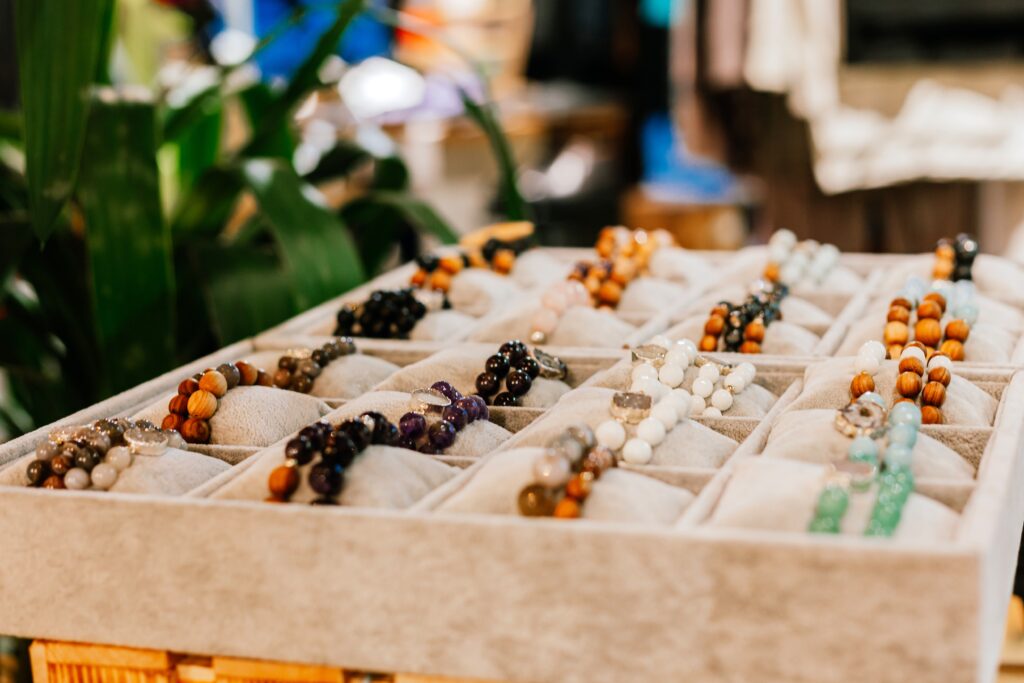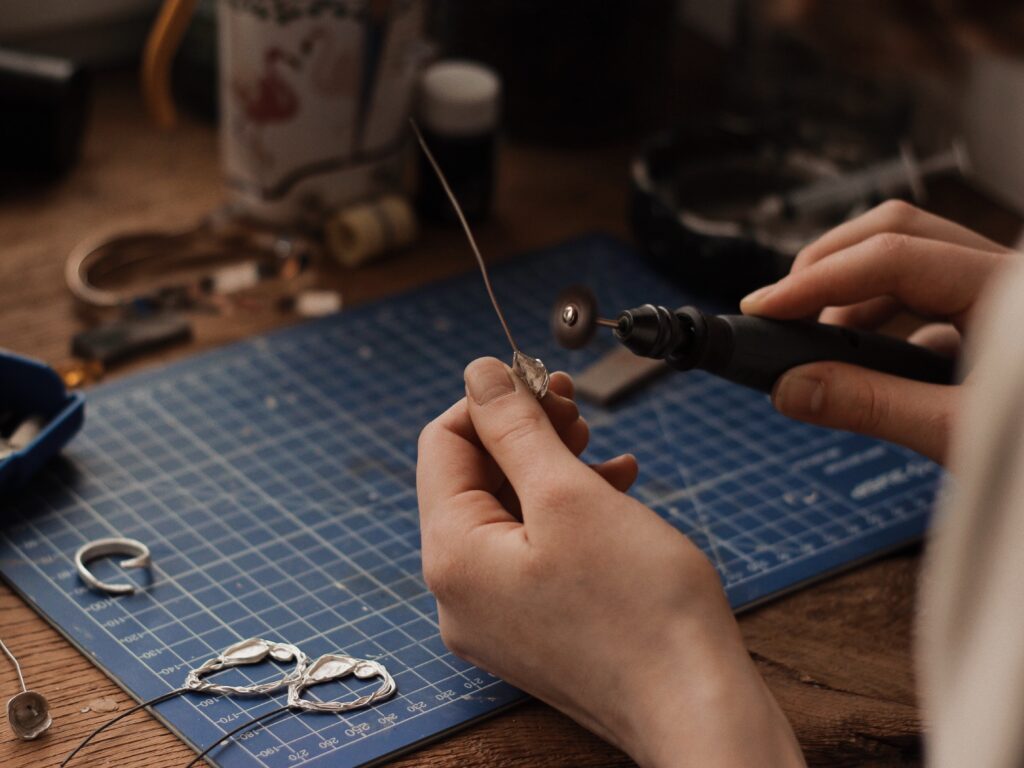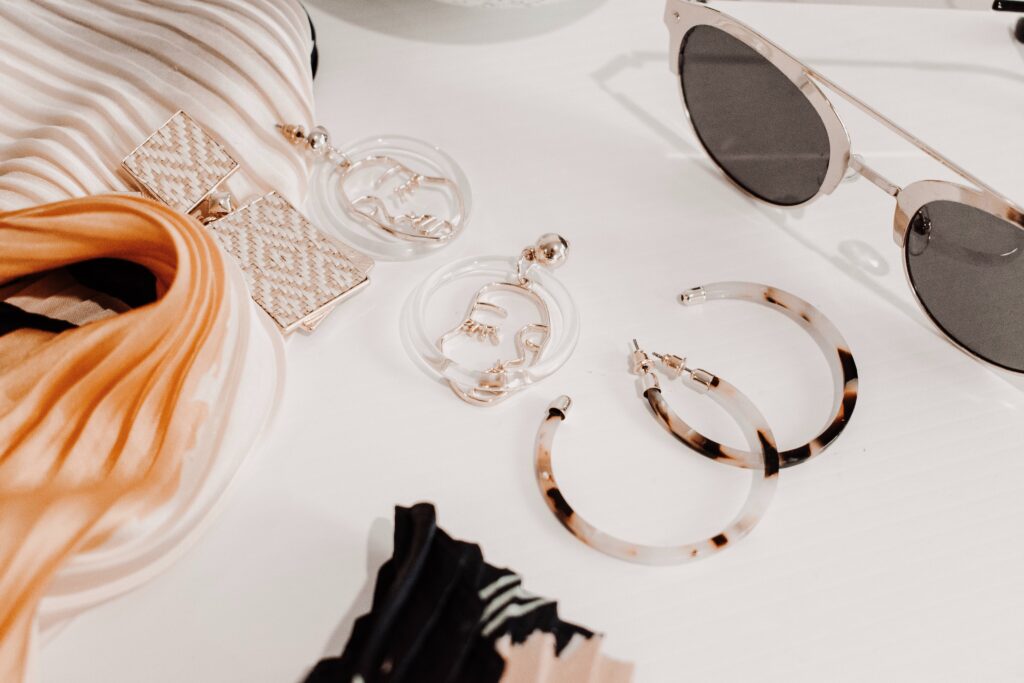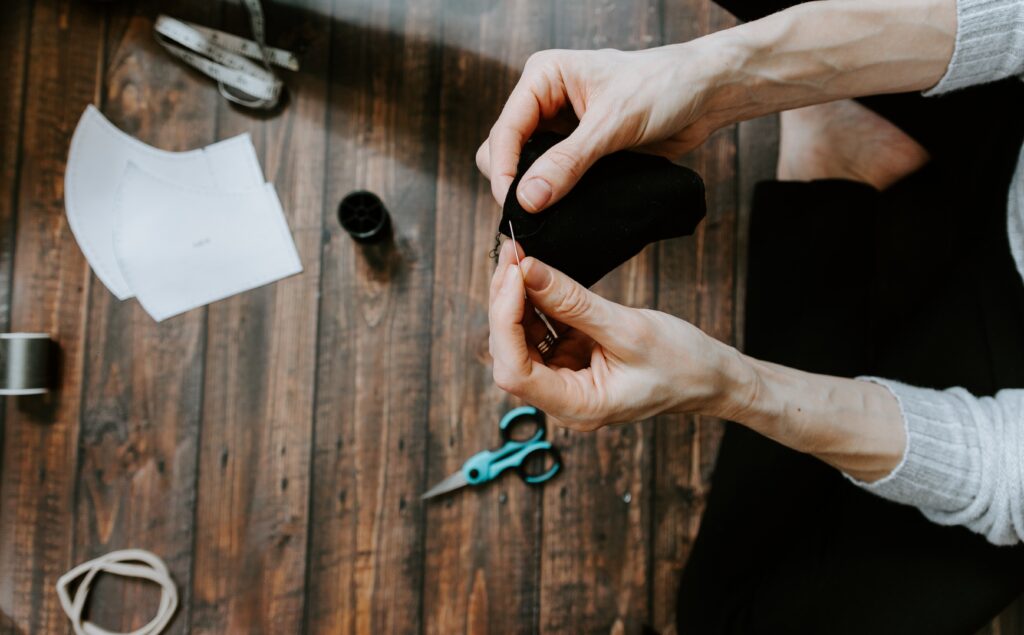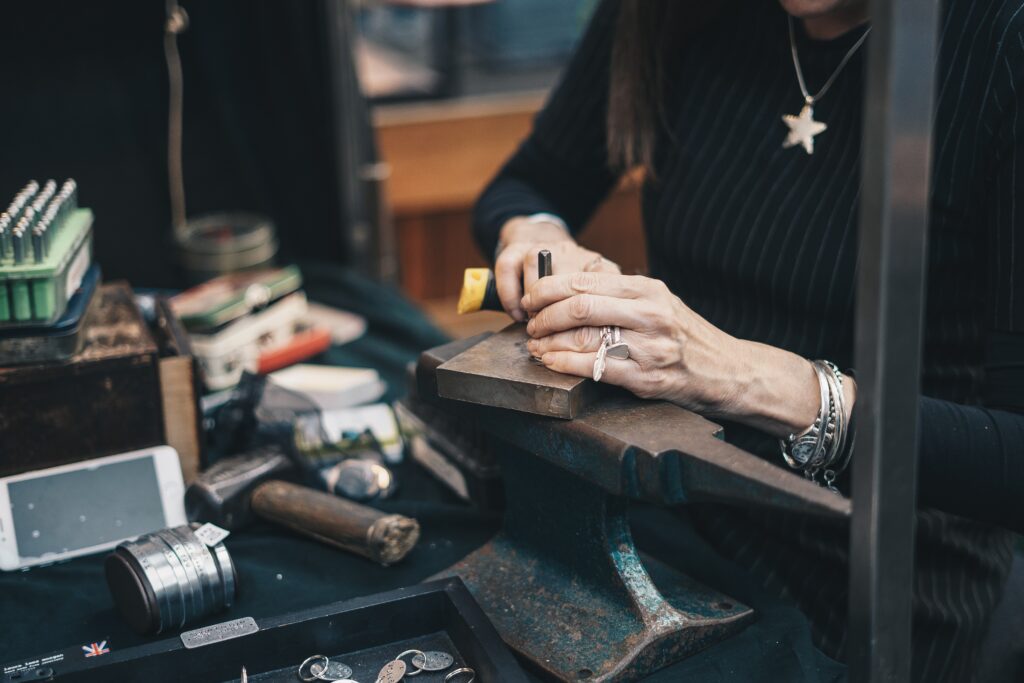
Handmade jewelry making is an art form that combines creativity and skill to create unique and beautiful pieces. From delicate beading to intricate wire-wrapping, there are countless techniques that artisans employ to bring their visions to life. In this article, we will explore some of the most popular techniques used in handmade jewelry making, providing you with a fascinating glimpse into this captivating world. Whether you are a curious novice or a seasoned jewelry enthusiast, this article will surely inspire and educate you on the exquisite craftsmanship behind every handmade treasure.
Check out our TOP three Recommended products
Wire Wrapping
Wire wrapping is a popular technique used in handmade jewelry making that involves using wire to create intricate designs and secure stones or beads in place. This technique is suitable for both beginners and experienced jewelry makers and offers a wide range of creative possibilities.
Basic Wire Wrapping
In basic wire wrapping, you start by selecting a gauge and type of wire that fits your design and the size of the stone or bead you want to wrap. Then, you cut a piece of wire to the desired length, leaving extra length to create loops or other decorative elements. Next, you use pliers to shape the wire around the stone or bead, creating a secure wrap. This technique is great for creating simple pendants or earrings.
Advanced Wire Wrapping
Advanced wire wrapping takes the basic technique to the next level by incorporating more intricate designs and wirework. This can include weaving multiple wires together, adding spirals or coils, or incorporating other materials such as gemstones or crystals. Advanced wire wrapping requires more practice and patience but can result in stunning and unique pieces of jewelry.
Coiling
Coiling is a technique used in wire wrapping to create decorative spirals or coils with wire. This technique adds a playful and whimsical touch to your jewelry designs. Coiling can be done using a simple handheld tool called a coiling gizmo or by hand if you prefer a more organic look. Coiling can be used to create focal points or to embellish wire-wrapped designs.
Beading
Beaded jewelry is another popular technique in handmade jewelry making. It allows for a wide variety of designs and styles, from simple and elegant to bold and colorful.
Stringing Beads
Stringing beads is the most basic technique in beaded jewelry making. It involves threading beads onto a stringing material such as wire, thread, or cord. Stringing beads can be as simple as creating a beaded necklace or bracelet, or it can involve more intricate patterns and designs. This technique is a great starting point for beginners who want to explore the world of beaded jewelry making.
Weaving Beads
Weaving beads is a more advanced technique that involves creating patterns and designs by weaving beads together using various stitches. Popular bead weaving techniques include peyote stitch, right angle weave, and herringbone stitch. Bead weaving allows for endless creative possibilities, from intricate bracelets and necklaces to beautiful earrings and statement pieces.
Embroidery
Bead embroidery is a technique where beads are sewn onto a fabric or backing material to create intricate designs and patterns. This technique combines the art of embroidery with the beauty of beads, resulting in unique and visually stunning pieces of jewelry. Bead embroidery can be used to embellish clothing, accessories, or to create standalone jewelry pieces such as brooches or pendants.
Metal Stamping
Metal stamping is a technique that involves using metal stamps to create impressions or designs on metal surfaces. This technique is popular for creating personalized jewelry pieces and adding unique and meaningful elements to your designs.
Tools and Materials
To start metal stamping, you will need a few essential tools and materials. These include metal stamps with various designs, a hammer, a metal bench block or surface, and metal blanks or discs. Metal blanks can be made of various metals such as aluminum, brass, or copper, depending on your preference and design.
Stamping Process
To stamp metal, you place the metal blank on the bench block or surface and position the metal stamp on top of it. Using the hammer, you firmly strike the metal stamp, creating an impression or design on the metal.
Embellishing Techniques
After stamping, you can further embellish your metal jewelry pieces by adding texture, patina, or other decorative elements. Texture can be added using tools such as hammers or metal rollers, while patina can give your jewelry an antiqued or distressed look. Other embellishing techniques include riveting, adding jump rings or connectors, and soldering additional metal components.
Metalwork
Metalwork is a broad category in handmade jewelry making that includes various techniques such as soldering, hammering, and cold connections. Metalwork allows for the creation of unique and durable jewelry pieces.
Soldering
Soldering is a technique that involves joining two or more metal components using heat and a soldering material, typically a metal alloy with a low melting point. This technique requires practice and precision to ensure a secure bond between the metals. Soldering is commonly used to create rings, earrings, or other metal jewelry pieces that require strong connections.
Hammering and Texturing
Hammering and texturing are techniques used to add visual interest and dimension to metal jewelry pieces. Hammering can create various textures and patterns on metal surfaces, while texturing involves impressing designs or patterns onto metal using specialized tools. These techniques are great for adding uniqueness and character to your metal jewelry designs.
Cold Connections
Cold connections are a technique used to join metal components without using heat or solder. This can include using rivets, screws, or other hardware elements to securely connect metal pieces. Cold connections allow for versatility in design and can add a contemporary and industrial look to your jewelry pieces.
Enameling
Enameling is a technique that involves fusing powdered glass onto metal to create a smooth and colorful surface. This technique has been used for centuries to create vibrant and durable jewelry pieces.
Cloisonne
Cloisonne is a traditional enameling technique that involves creating compartments or cells on metal surfaces using thin metal wires. These compartments are then filled with powdered glass and fired in a kiln, resulting in a beautiful and intricate design. Cloisonne allows for precise detailing and can create stunning pieces of jewelry.
Champleve
Champleve is another enameling technique where recessed areas on metal are filled with powdered glass and fired. The excess glass is then ground or polished away, leaving the metal surface and the glass-filled areas at the same level. Champleve allows for more free-form designs and can create unique and eye-catching jewelry pieces.
Plique-a-Jour
Plique-a-Jour is a challenging enameling technique that involves creating a stained glass effect by filling transparent cells with colored enamel. The cells are supported by a delicate metal framework and fired in a kiln, resulting in a translucent and light-filled design. Plique-a-Jour requires advanced enameling skills and can create intricate and ethereal jewelry pieces.
Lapidary
Lapidary is the art of cutting, shaping, and polishing gemstones. This technique allows for the creation of unique and beautiful gemstone jewelry pieces.
Gemstone Cutting
Gemstone cutting involves shaping raw gemstones into various shapes and sizes for use in jewelry. This can be done using saws, grinding wheels, and polishing equipment. Gemstone cutting requires precision and skill to unleash the beauty and brilliance of each stone.
Cabochon Making
Cabochon making is a technique where gemstones are shaped and polished into smooth and rounded shapes without any facets. These cabochons are then used as focal points in jewelry designs. Cabochons can enhance the colors and patterns of certain gemstones, creating captivating and one-of-a-kind jewelry pieces.
Faceting
Faceting is a technique used to create geometric shapes with multiple flat surfaces, called facets, on gemstones. This technique maximizes the brilliance and sparkle of gemstones by allowing light to enter and reflect within the stone. Faceted gemstones are commonly used in rings, earrings, and necklaces, adding a touch of elegance and glamour.
Chainmaille
Chainmaille is a technique that involves weaving metal rings together to create intricate and flexible chains. This technique has a rich history and is commonly associated with armor making but has since been adapted for jewelry making.
Various Chainmaille Patterns
Chainmaille offers a wide variety of patterns and weaves to choose from, each with its own unique look and level of complexity. Popular chainmaille patterns include the Byzantine weave, the European 4-in-1 weave, and the Japanese 12-in-2 weave. These patterns can be combined to create stunning chainmaille bracelets, necklaces, or even earrings.
Basic Weaving Techniques
To start chainmaille, you will need metal rings in different sizes and gauges. You begin by opening a ring using pliers, weaving it through other rings in a specific pattern, and then closing the ring. This process is repeated until the desired length or design is achieved. Basic weaving techniques are easy to learn and can be a fun and rewarding way to create unique chainmaille jewelry pieces.
Adding Charms and Pendants
Once you have mastered the basic chainmaille techniques, you can enhance your creations by adding charms and pendants. Charms and pendants can be easily attached to the chainmaille using jump rings, adding a personal touch or thematic element to your jewelry designs. This allows for customization and the creation of truly personalized pieces.
Polymer Clay
Polymer clay is a versatile and easy-to-use material in jewelry making. It can be shaped, textured, and baked to create unique and colorful jewelry pieces.
Techniques for Shaping and Forming
Polymer clay can be shaped and formed using various techniques, such as rolling, sculpting, or molding. You can create beads, pendants, or even miniature sculptures using polymer clay. The clay is pliable and can be easily manipulated, allowing for endless possibilities in design.
Texturing and Sculpting
Texturing and sculpting polymer clay can add depth and visual interest to your jewelry pieces. This can be done using specialized tools, such as texture sheets, texture stamps, or carving tools. Texturing can create patterns or imitate natural elements, while sculpting allows you to create intricate details and three-dimensional designs.
Baking and Finishing
Once you have shaped and textured your polymer clay pieces, they need to be baked to harden and set the clay. Follow the manufacturer’s instructions for baking times and temperatures. After baking, you can sand, buff, or polish your polymer clay creations for a smooth and professional finish. You can also add additional finishes, such as varnish or glaze, to enhance the colors and protect the surface.
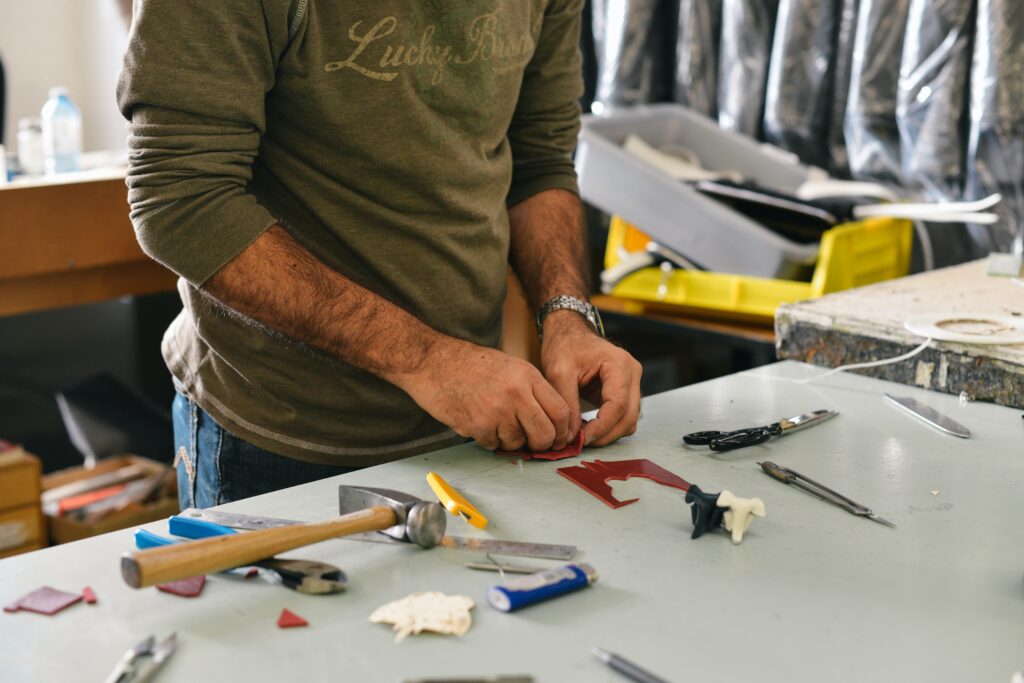
Check out our TOP three Recommended products
Knotting
Knotting is a technique used to create intricate and decorative knots using various materials such as cord, thread, or leather. Knotting can add a bohemian or nautical touch to your jewelry designs.
Macramé
Macramé is a knotting technique that involves creating patterns and designs using cords. This technique can be used to create bracelets, necklaces, or even earrings. Macramé allows for a wide range of knotting styles and can incorporate beads or charms for added visual interest.
Chinese Knotting
Chinese knotting is a traditional knotting technique that originated in China. It involves the creation of intricate knots using silk or nylon cords. Chinese knots symbolize luck, prosperity, and protection and are commonly used in jewelry, accessories, and decorative items. Chinese knotting adds a touch of cultural significance to your jewelry designs.
Tassel Making
Tassels are decorative elements made of threads or cords that can be added to jewelry pieces to create movement and visual interest. Tassel making involves wrapping and knotting threads or cords together to form a tassel shape. Tassels can be added to necklaces, bracelets, or earrings, creating a playful and whimsical look.
Resin Jewelry
Resin jewelry is a technique that involves pouring liquid resin into molds or settings and allowing it to cure, resulting in unique and glossy jewelry pieces.
Resin Casting
Resin casting is the process of pouring liquid resin into a mold and allowing it to cure and harden. This technique allows you to create a wide variety of shapes and sizes, from simple geometric forms to intricate designs. Resin casting is a versatile technique that can be combined with other elements such as dried flowers, glitter, or pigments to create visually stunning jewelry pieces.
Embedding Objects
Resin jewelry allows for the embedding of various objects to add depth and interest to your designs. You can embed dried flowers, leaves, charms, or even small photographs into the resin before it cures. This technique creates unique and personalized pieces that capture memories or convey a specific theme.
Creating Unique Effects
Resin jewelry offers endless possibilities for creating unique effects and textures. You can add pigments or dyes to the resin to create vibrant colors or experiment with different techniques such as layering or marbling. The translucent nature of resin allows light to pass through, creating a beautiful and captivating effect.
In conclusion, handmade jewelry making offers a wide range of techniques for creative expression. From wire wrapping to metal stamping, from bead weaving to resin casting, there is a technique to suit every style and skill level. Whether you’re a beginner or an experienced jewelry maker, the world of handmade jewelry making is full of possibilities waiting to be explored. So grab your tools, unleash your creativity, and start creating your own unique and beautiful jewelry pieces.
